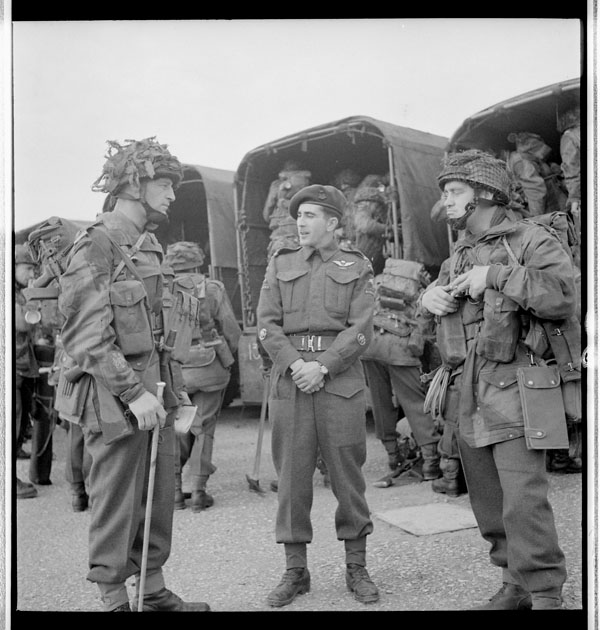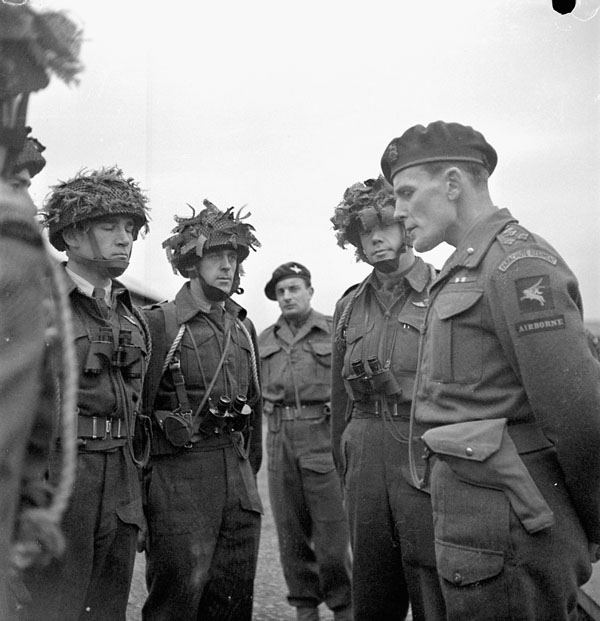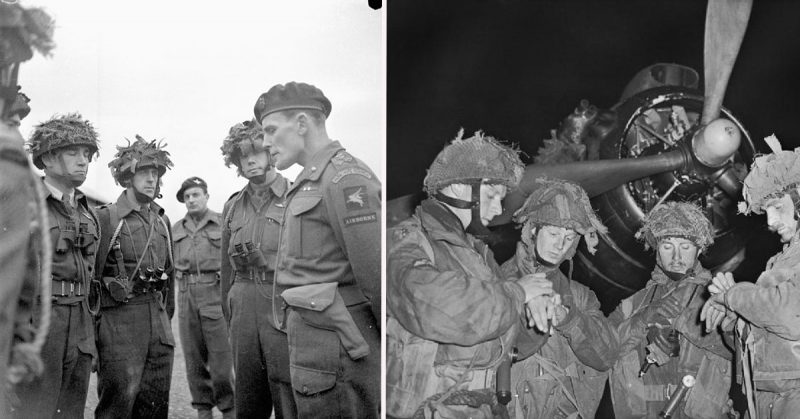On the evening of June 5th 1944, just over 540 Canadians boarded planes on the Southern English coast. These men were about to be a part of Operation Overlord, one of the largest invasions in modern history. It would prove to be one of the major turning points in the War in Europe, allowing the Western Allies to open up a second front against Germany.
The men were preparing for D-Day, the Invasion of Normandy.
These men, from the 1st Canadian Parachute Battalion, had started this story in 1942. Originally the unit was formed to defend Canada from potential invasion. But after the Battle of the Atlantic was won in 1943, it became clear that invasion was unlikely. The unit was then moved to England to prepare for the upcoming invasion. But June 5th, 1944, they had been training for over six months.
The Battalion had five objectives that day. The first, and most important, was securing the drop zone. This meant that the men of the Battalion had to clear out any German ground troops in the vicinity after they landed. This was to ensure that if supplies couldn’t be brought from the beaches, they could still be airdropped. The next objective was the Bridge, this task given to C Company. The bridge was on the Easternmost flank of the invasion, and likely where German tanks would cross if they would counterattack. Next came the Robehomme Bridge, given to B Company.
South of Varaville, this bridge was another likely bottleneck for a German counter-attack. A Company was given the task of protecting the Southeastern flank of the British 9th Parachute Battalion’s attack on the Merville battery. Finally, B company was to take and hold the ridge at Le Plein and Bois du Bavent. This ridge provided high ground and cover to the southeastern flank.

As their planes crossed the channel, many of the men began to feel a mixture of fear and excitement. Most had never seen combat but were happy for the opportunity. They had all volunteered to be here, three times in fact. They first had to volunteer for service, as Canada had no draft. Then you had to volunteer for overseas service, and finally, you would have to volunteer for the Parachute Battalion.
Every man who was on those planes was their by his own choice, and as such morale was high.
But military plans rarely last the test of combat, and this was no exception. The planes immediately came under fire once they reached the airspace over France. Their pilots, fearing for both their lives and the 10 to 20 men they had on each plane, took evasive action.
This scattered them, leading to men being dropped very far away from their intended zones. While the men were ready to quickly move across the countryside, a dispersed airborne unit is much less effective. On the first day, there were very high rates of capture and casualty. The unit even lost its only heavy weapons; a mortar team who was captured almost immediately.
To add to the difficulties of scattered drops the landing zones were in a deplorable state. The Germans had flooded many of the large fields, knowing that was where most paratroops would end up. For many, this was little more than an encumbrance, slowing men down. But many of the men fell into the drainage ditches along the edges of fields.

These ditches were anywhere between 6 to 8 feet deep. Filled with water, these quickly became deep pools. Each man was wearing upwards of 80 lbs of equipment and supplies, making it impossible to swim out. Because of this, many of men drowned the moment they hit the ground.
Despite these setbacks though, the men prevailed. C Company quickly and effectively started working towards Varaville. But due to a terrible friendly fire incident, many of C Company’s men were wiped out. Allied airpower was tasked with bombing the Merville battery. But due to the difficulty of landing airborne troops, and the aircraft arriving late, this bombardment hit many of C Company’s sticks.
As a result, they reached Varaville with only slightly over 30 of the 120 men they were supposed to have. Come morning they began their advance on the town. Using passing stragglers as reinforcements, the 30 some men of C Company eventually succeeded in capturing the town. Along with the town came over 40 German prisoners, who were surprised and annoyed to discover they were captured by a group of lightly armed Canadians, rather than the large infantry force they thought they were facing.
After taking the town, the Canadians assisted a British commando unit with blowing the bridge, then returned to Battalion Headquarters le-Mesnil B Company, like C Company, quickly took their objective. Blowing the bridge at Robehomme, preventing any German advance.They then immediately worked back the le-Plein and Bois du Bavert ridge. This ridge not only further prevented counter-attack, but could also prevent German observers from seeing the beach and bridgeheads in Normandy.
A Company’s assistance to the assault on the Merville Battery proved to be incredibly useful. This battery was the greatest threat to the Airborne operation of the invasion. Were these guns allowed to operate freely, the German troops would have been able to shell any Allied position in the vicinity. This would have weakened the Eastern Flank. This could have allowed the German armor stationed to the east of Normandy to break through the lines, and forced the Allies back to the sea.
During these operations, the Battalion took incredibly heavy casualties. In the first 12 days in France, they took 249 casualties (captured, killed or wounded). This was almost half of their original number of 547. Adding to the complications, many of the officers were killed. C Company losing all but one. In the face of this, though, many of the non-commissioned officers took command. There were numerous reports of Corporals and sergeants leading assaults, and groups who would normally have been lead by a Lieutenant. This willingness to take extra responsibility was undoubtedly instrumental in the battalion’s effectiveness during these operations.
The 1st Canadian Parachute Battalion was one of the few units to effectively capture all of their given objectives at D-Day. Their hold on the eastern flank of the invasion prevented any German counterattack from making it to the beaches. After Operation Overlord the battalion stayed in France; fighting almost constantly until September 7th, 1944; when they returned to England.
